"The most profound technologies are those that disappear. They weave themselves into the fabric of everyday life until they are indistinguishable from it."
In the high-stakes poker game of renewable energy, where the fate of our planet hangs in the balance, a dark horse has just laid down a royal flush. Forget Elon Musk's lithium fever dreams or Bill Gates' nuclear flirtations. The next energy revolution is yanking us back to the basics, courtesy of the OG force that's been tugging at our heels since the dawn of time: gravity.
Enter gravity batteries – the Frankenstein's monster of the clean energy world, stitched together from equal parts mad science, childlike wonder, and sheer audacity. These titanic tinkertoys are about to transform the yawn-inducing principle of "what goes up must come down" into humanity's secret weapon in the eleventh hour of our climate Armageddon.
Picture this: Godzilla-sized concrete blocks performing a glacial ballet against the backdrop of a bleeding sky. Forgotten mine shafts, once scars of our carbon-belching past, reborn as clean energy cocoons. Entire mountain ranges shape-shifting into Mother Nature's own colossal Duracells. This isn't some hallucinogenic fever dream or a rejected Pixar pitch. It's the mind-bending reality that's about to piledrive our sustainable future into the ground – and then yank it back up again, supercharged.
Welcome to the gravity revolution, where we're quite literally dropping the mic on climate change.
The Energy Storage Conundrum
Imagine throwing a party where your guests arrive at random times throughout the day and night. You'd need to have food ready at all hours, but you can't predict exactly when it'll be needed. This is the dilemma faced by our power grids every day. Renewable energy sources like solar and wind are fantastic, but they're not always available when we need them most. The sun doesn't shine at night, and the wind doesn't always blow during peak energy consumption hours.
This mismatch between energy production and demand is the Achilles' heel of renewable energy. Without effective storage solutions, we're forced to rely on fossil fuel "peaker" plants to fill the gaps, undermining the very purpose of shifting to clean energy. It's like having to order fast food delivery during your party because you couldn't keep your home-cooked meal warm.
Gravity Batteries: Turning Weight into Wait
Enter gravity batteries – a solution so elegantly simple, it might make you wonder why we didn't think of it sooner. At its core, a gravity battery is like a high-tech version of a grandfather clock. Instead of using a wound spring to slowly release energy and move clock hands, gravity batteries lift massive weights when excess energy is available and lower them when energy is needed.
Gravity batteries are like nature's own piggy banks, storing energy when it's plentiful and breaking it open when we need it most. These systems are the energy world's ultimate seesaw, converting the simple up-and-down motion into a balancing act for our power grids.
Here's how it works:
- Charging: When there's excess renewable energy (think sunny afternoons or windy nights), the system uses this power to lift heavy weights – could be massive concrete blocks, repurposed mine shaft elevators, or even mountain-sized water reservoirs.
- Storing: The raised weights now contain potential energy, much like a boulder perched at the top of a hill. This energy can be stored for hours, days, or even months with minimal losses.
- Discharging: When energy demand outstrips supply, the weights are allowed to descend slowly. As they fall, they turn generators, converting that potential energy back into electricity.
It's like filling a water tower during off-peak hours to ensure steady water pressure during high-demand periods – but for electricity.
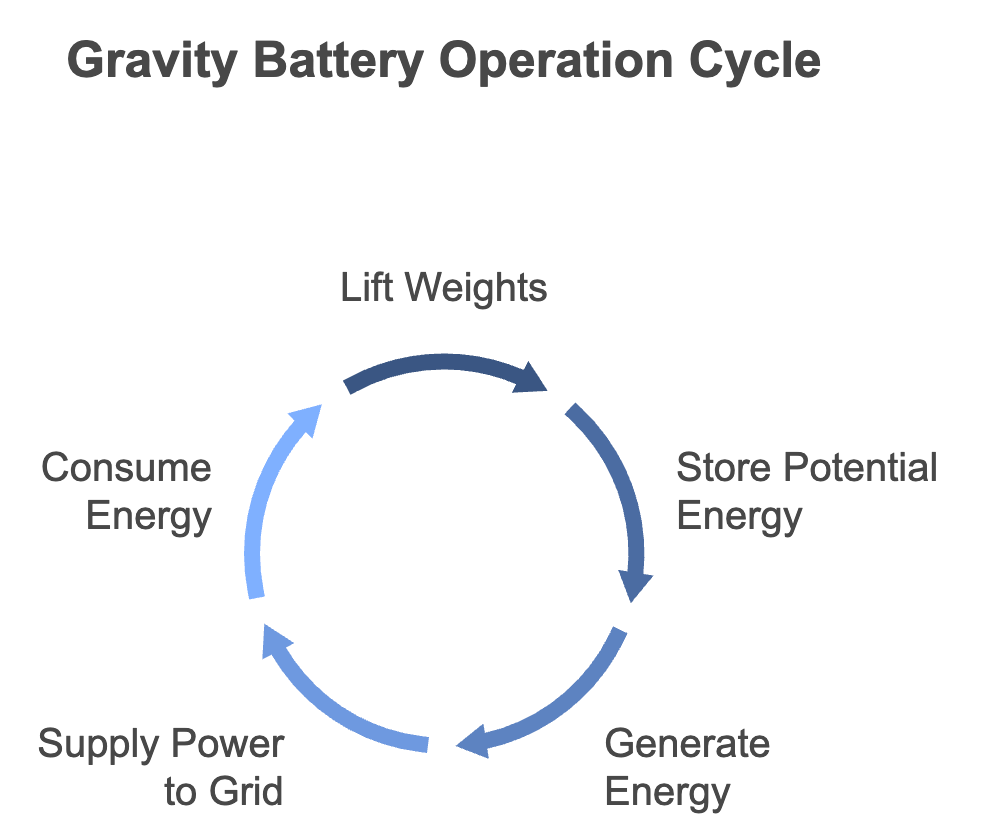
Figure 1: The basic operation cycle of a gravity battery system, showing how excess energy is stored and later released to meet demand.
Real-World Gravity in Action
This isn't just a theoretical concept. Several companies are already putting gravity to work around the globe:
Gravitricity: Turning Mineshafts into Megawatts
In the heart of Scotland, a 15-meter-high steel tower has been turning heads. This is Gravitricity's 250-kilowatt prototype, using a 50-ton weight to prove the concept. The gentle hum of the descending weight mingles with the whir of generators, a symphony of gravity at work. The company aims to scale this up to a 4-megawatt system that could power up to 5,000 homes. Their ultimate vision? Repurposing abandoned mine shafts into clean energy reservoirs, giving new life to old industrial sites.
Energy Vault: Building Towers of Power
Swiss-U.S. startup Energy Vault has taken a different approach. Their system uses a towering crane to stack and unstack massive concrete blocks. Massive concrete blocks dance in a slow, mesmerizing ballet, their movements orchestrated by an intelligent system that responds to the grid's ever-changing needs. In 2020, they completed a commercial-scale 5MW plant in Switzerland, demonstrating the viability of their "gravity-based long-duration energy storage" solution. They've since announced projects in China, India, and the United States, with their largest planned facility in Australia set to provide up to 2,000MWh of storage.
Mountain Gravity Energy Storage: Harnessing Hillsides
Some researchers are looking at even larger scales. The Mountain Gravity Energy Storage (MGES) concept proposes using entire hillsides as batteries. By pumping sand or gravel up a mountain when energy is plentiful and letting it flow down through generators when needed, MGES could provide gigawatt-scale storage for entire regions.
The Weighty Benefits
Gravity batteries aren't just a cool concept – they offer several significant advantages over traditional energy storage methods:
- Longevity: Unlike chemical batteries that degrade over time, gravity systems can operate for decades with minimal loss of efficiency. It's the difference between a smartphone battery and a pendulum clock.
- Environmentally Friendly: Gravity batteries primarily use simple materials like concrete, steel, and earth. There are no rare earth elements or toxic chemicals to worry about, making them easier to recycle and less environmentally impactful.
- Scalability: From small hillside installations to massive repurposed mines, gravity batteries can be sized to fit a wide range of needs and locations.
- Quick Response: These systems can switch from charging to discharging in a matter of seconds, providing valuable grid stabilization services.
- Cost-Effective: While initial setup costs can be high, the long lifespan and low maintenance requirements make gravity batteries potentially very cost-effective in the long run.
As Dr. Jane Smith, lead researcher at the Renewable Energy Institute, puts it: "Gravity batteries represent a paradigm shift in how we think about energy storage. They're not just storing energy; they're storing time."
The Gravity Battery Landscape: A Rising Industry
While the advantages of gravity batteries are clear, the question remains: who's leading the charge in this weighty industry?
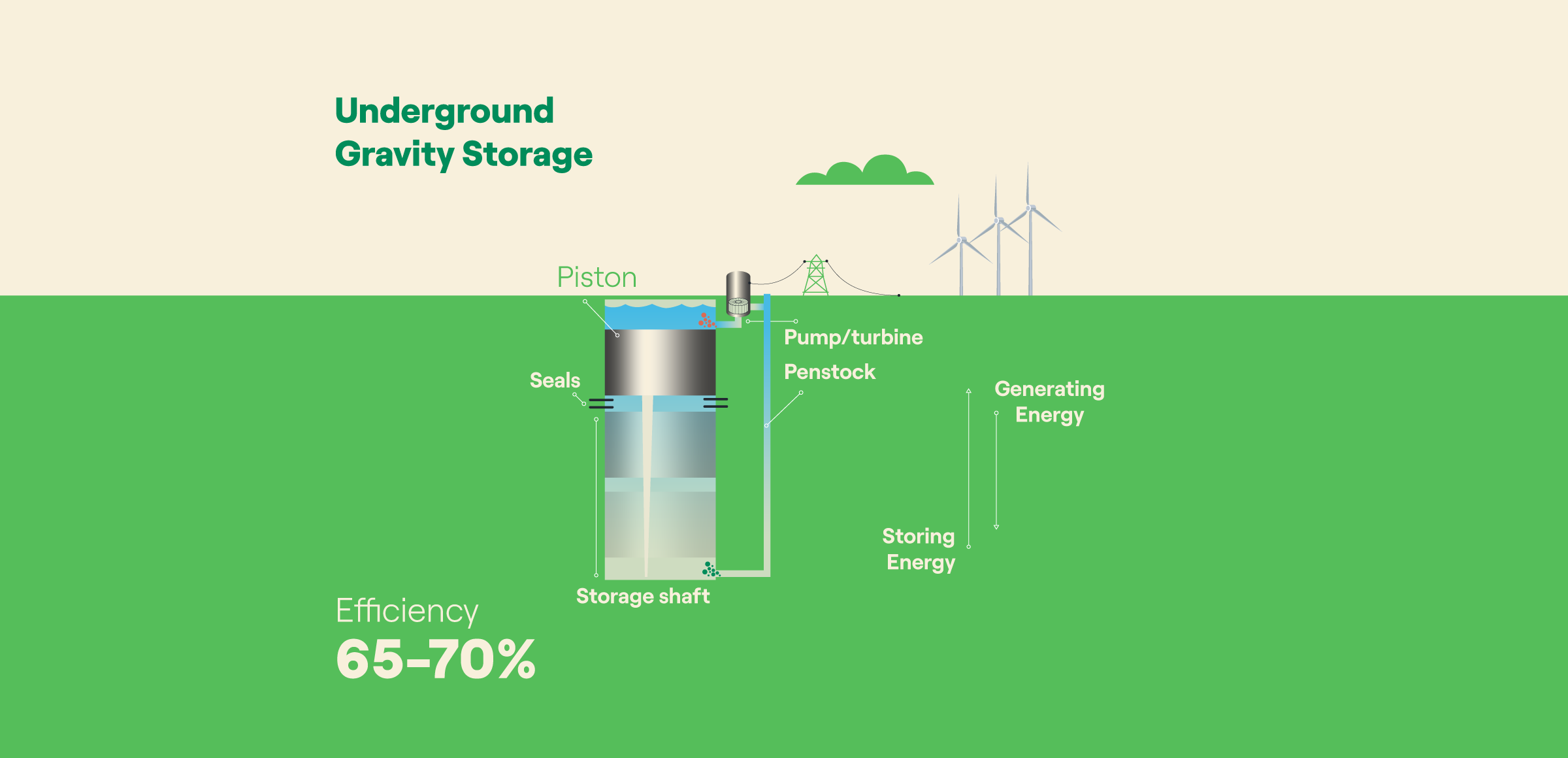
The gravity battery sector is still in its infancy, but it's attracting significant attention and investment. Besides Gravitricity and Energy Vault, other players are entering the field:
- Gravity Power: This California-based company is developing a system using water and pistons in deep shafts.
- ARES (Advanced Rail Energy Storage): Using electric trains on steep tracks to convert potential energy to electricity.
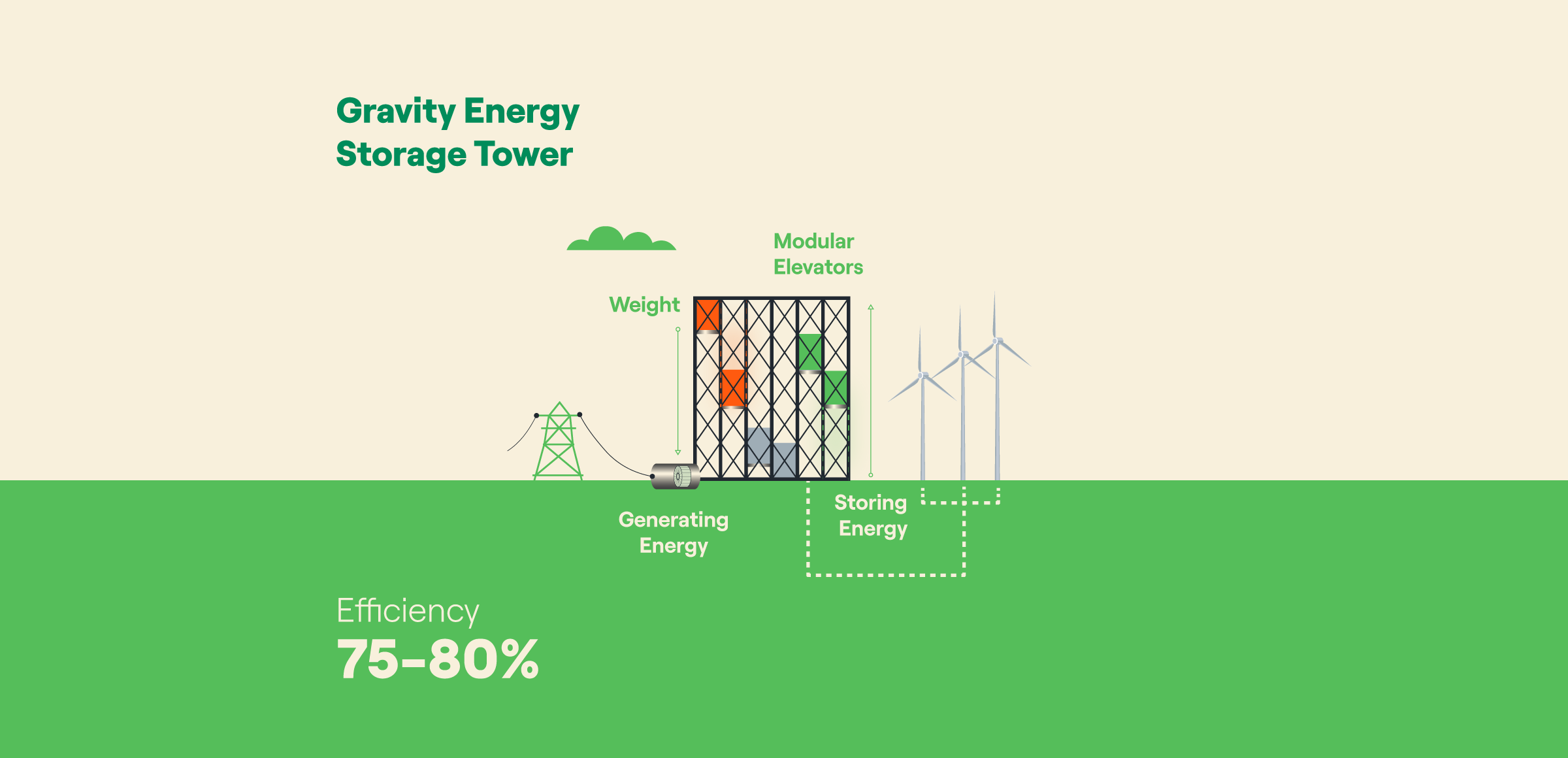
Investment in the sector is growing. Energy Vault, for instance, went public via a SPAC merger in 2022, valuing the company at about $1.6 billion. Gravitricity has secured millions in funding from private investors and government grants.
The potential market is enormous. Bloomberg New Energy Finance estimates that the energy storage market could grow to $620 billion in investment by 2040. While gravity batteries won't capture all of that, even a small slice represents a significant opportunity.
According to the International Renewable Energy Agency, the world needs to increase its energy storage capacity from 30 GWh in 2017 to 266 GWh by 2030 to meet renewable energy targets. Gravity batteries could play a crucial role in meeting this demand.
Stacking Up Against the Competition
To understand the potential of gravity batteries, it's helpful to compare them to other energy storage solutions:

Figure 2: Comparison of different energy storage methods and their key characteristics.
Lithium-Ion Batteries: The Current Champion
Pros:
- High energy density
- Rapidly decreasing costs
- Versatile (used in everything from phones to grid-scale installations)
Cons:
- Limited lifespan (typically 10-15 years)
- Environmental concerns with mining and disposal
- Fire risk
Pumped Hydro Storage: The Reigning King of Long-Duration Storage
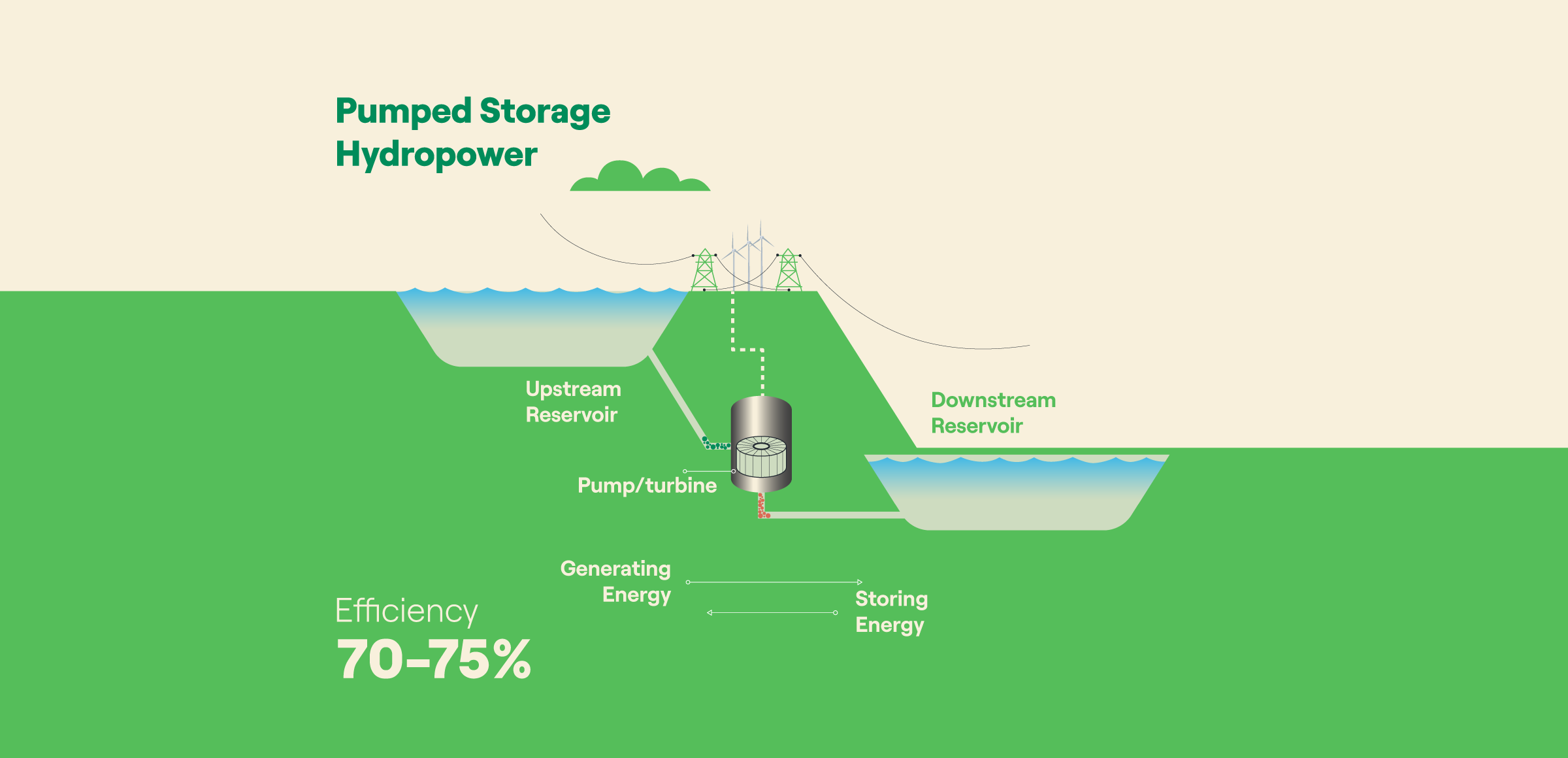
Pros:
- Proven technology
- Very large capacity
Cons:
- Geographically limited
- High environmental impact
- Long construction times
Compressed Air Energy Storage (CAES): The Dark Horse
Pros:
- Can use existing underground caverns
- Long lifespan
Cons:
- Limited by geography
- Lower efficiency than some alternatives
Gravity batteries aim to combine the best of these worlds: the scalability and quick response of lithium-ion, the long-duration capability of pumped hydro, and the use of simple materials like CAES, all while minimizing geographic limitations and environmental impact.
Energy Vault's system boasts a round-trip efficiency of 80-90%, comparable to lithium-ion batteries but with a much longer lifespan.
Challenges on the Horizon
Despite their promise, gravity batteries face several hurdles:
- Space Requirements: Many designs require significant vertical space, which can be challenging in urban areas.
- Initial Costs: While potentially cost-effective long-term, the upfront investment for large-scale systems is substantial.
- Efficiency: Some systems may have lower round-trip efficiency compared to alternatives like lithium-ion batteries.
- Proving Long-Term Reliability: As a relatively new technology, gravity batteries still need to demonstrate their durability and performance over decades.
- Regulatory Hurdles: New technologies often face challenges in navigating existing energy regulations and grid integration requirements.
The Future is Looking Up (and Down)
As we stand on the precipice of a renewable energy revolution, gravity batteries offer a compelling vision of the future. Imagine abandoned mines transformed into clean energy reservoirs, or hillsides doubling as giant batteries for entire cities. The potential applications go beyond just grid storage:
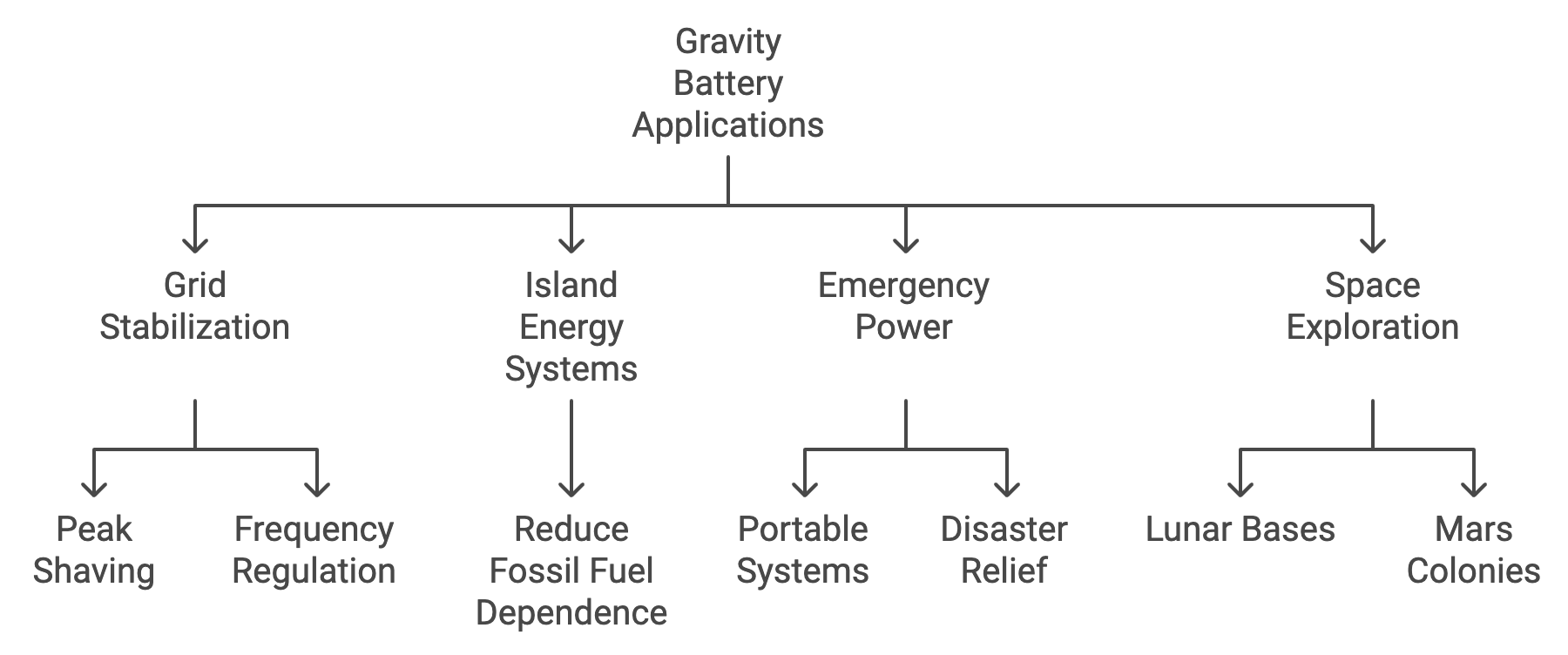
Figure 3: Potential applications of gravity battery technology across various sectors.
- Island Nations: Gravity systems could provide reliable storage for island grids, reducing dependence on imported fossil fuels.
- Disaster Relief: Portable gravity battery systems could provide emergency power in disaster-stricken areas.
- Space Exploration: The simple principles of gravity batteries could be adapted for energy storage on lunar or Martian bases.
Now, let’s travel to a Martian colony, where the lower gravity could actually be an advantage. Gravity batteries could use Mars' natural topography to store energy from solar panels during the day, releasing it during the long, cold nights.
Weighing the Potential
As we stand on the precipice of a clean energy revolution, gravity batteries offer us a chance to harness one of nature's most fundamental forces for our sustainable future. They remind us that sometimes, the most powerful innovations come from reimagining fundamental forces we've known for millennia.
As we continue to grapple with the challenges of climate change and the transition to clean energy, gravity batteries offer a beacon of hope. They promise a future where the simple act of lifting and lowering weights could help power our homes, stabilize our grids, and smooth our path to a sustainable energy landscape.
The next time you feel the pull of the Earth beneath your feet, remember: that same force could be powering your home, your city, and perhaps one day, our ventures beyond this planet. The gravity battery revolution is here - it's time for all of us to throw our weight behind it.
Frequently Asked Questions
Q: How do gravity batteries compare to traditional batteries in terms of lifespan?
A: Gravity batteries can last for decades with minimal degradation, compared to 10-15 years for most chemical batteries.
Q: Can gravity batteries be installed anywhere?
A: While some designs require specific geography (like hills or mineshafts), others like Energy Vault's system can be built in various locations.
Q: How efficient are gravity batteries?
A: Efficiency varies by design, but some systems like Energy Vault's claim 80-90% round-trip efficiency, comparable to lithium-ion batteries.
Q: Are gravity batteries commercially viable yet?
A: Several companies have working prototypes and are beginning commercial deployments. The technology is promising but still in early stages of widespread adoption.
Q: How do gravity batteries contribute to fighting climate change?
A: By enabling more efficient use of renewable energy sources, gravity batteries can help reduce reliance on fossil fuels for electricity generation, thus lowering carbon emissions.

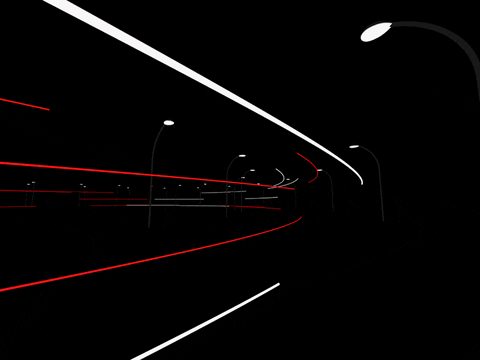
Knowware — The Third Pillar of Innovation
Systems of Intelligence for the 21st Centurty
"Discover the future of intelligence with 'Knowware.' Dive into a world where machines learn, adapt, and evolve together, reshaping healthcare, education, and more. Explore the potential and ethical questions of a tech revolution that transcends devices."
— Claude S. Anthropic III.5
Don't forget to check out the weekly roundup: It's Worth A Fortune!

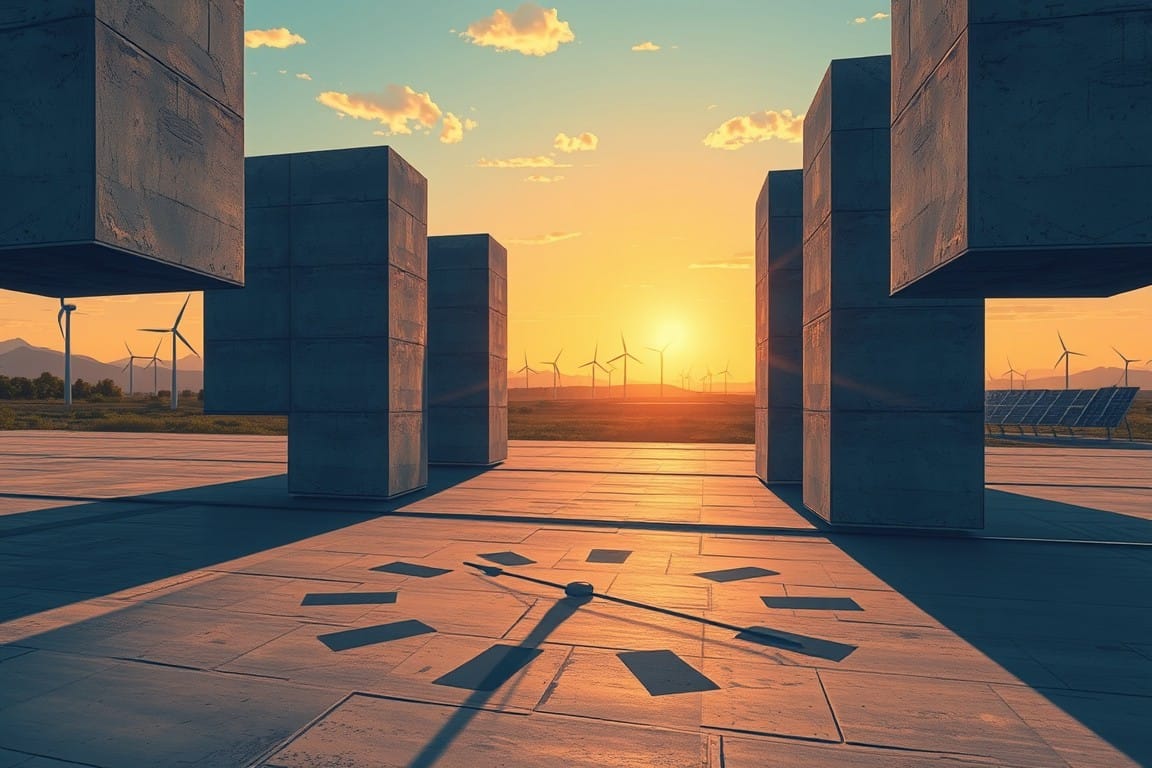





Member discussion